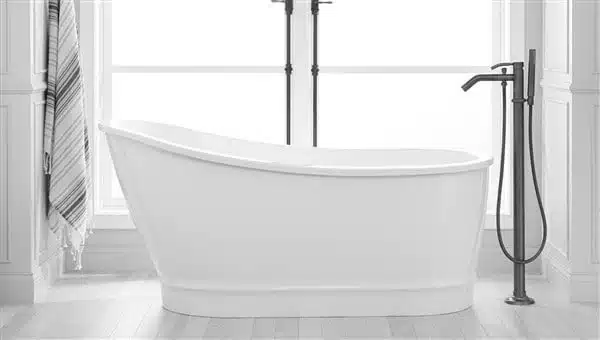Is your tub draining too slowly or not at all? The culprit could be a faulty tub drain. A tub drain replacement can fix this issue and improve the overall function of your bathtub. It might sound daunting, especially if you’re not familiar with plumbing, but don’t fret! With the right tools and a little bit of patience, you can do this job yourself. So, roll up your sleeves and let’s get started with this step-by-step guide.
Table of Contents
Assessing Your Tub Drain
In the initial step of this process, you should evaluate the condition of your existing tub drain. An assessment can help identify the need for a replacement. Symptoms of a faulty tub drain can range from prolonged drainage time to frequent blockages, or even water seepage underneath the tub. Another surefire indicator is physical wear and tear like visible rusting or corrosion on the drain’s surface. If your tub drain exhibits any of these signs, it’s a strong indication that you are due for a tub drain replacement.
Gathering Necessary Tools
As you embark on this tub drain replacement journey, the first thing to do is assemble all the tools and materials you’ll need. This ensures a smooth and efficient work process.
First and foremost, you’ll need a drain wrench or a pair of pliers, which will be instrumental in removing the old drain and installing the new one. Next up is the plumber’s putty, a vital component for creating a waterproof seal around your new drain. Additionally, arm yourself with a screwdriver for any necessary loosening or tightening tasks.
Of course, you’ll also need a new tub drain that matches the size of your existing one. It’s crucial to get the right size, as an ill-fitting drain will lead to persistent issues down the line. Lastly, gather some cleaning materials to ensure the drain hole is clean and ready to receive the new drain.
By preparing these tools in advance, you set the stage for a hassle-free tub drain replacement. Now, you’re ready to dive into the task ahead. Let’s roll!
Removing the Old Drain
Let’s proceed to the actual tub drain replacement. Start by loosening the old drain. You’ll do this by gripping it with your drain wrench or pliers and rotating it in a counterclockwise direction. You may encounter resistance, particularly if the drain is considerably old or corroded. Don’t worry, a little elbow grease should do the trick!
Make sure to hold onto the tub for stability while you’re doing this to prevent any unwanted movement. Once you’ve successfully unscrewed the old drain, the next step is to clean up. Get rid of any remaining putty, dirt, or debris in and around the drain hole. A clean workspace is crucial for the successful installation of your new tub drain. You’re now ready for the next phase!
Preparing for the New Drain
Now that the workspace is clean, it’s time to prime the new drain for installation. Begin by taking a good amount of plumber’s putty and rolling it until you have a thin, rope-like shape. This will be used to create an effective waterproof barrier.
Next, meticulously wrap the putty around the lower portion of the new drain’s flange, which is the lip or edge. This ensures a tight, secure seal once the drain is installed into the tub. Taking the time to perform this step correctly will save you from potential leaks and subsequent repairs down the line. Now that the new drain is suitably prepared, we’re ready to proceed with the installation. Let’s move on to the next stage!
Installing the New Drain
Initiate the placement of your new drain by aligning it with the drain hole. Rotate it in a clockwise direction to secure it. Utilize your drain wrench or pliers to provide extra firmness but exercise caution. Over-tightening can lead to undesired damage. As you tighten, surplus putty may be pushed out from the edges. This is a common occurrence, simply wipe away the excess. The meticulous preparation stages have led to this point. With the new drain securely installed, you’re ready for the final examination of your efforts – the leak test!
Testing the New Drain
With the new drain securely in place, it’s time to make sure everything is functioning as it should be. Begin by filling your tub with water. Once full, release the water and observe how it drains. This will allow you to see if the water is flowing smoothly down the drain, or if there’s any visible leakage around the drain flange.
A smoothly flowing drain without any leaks indicates a successful tub drain replacement. If, however, you notice water leaking or the drain functioning slower than expected, you may need to revisit the previous steps to ensure the drain was installed correctly.
Note that some minor adjustments might be necessary, such as tightening the drain a bit more or adding some extra plumber’s putty. Once these adjustments are made, carry out the test again. Your goal is a leak-free, smoothly functioning tub drain.
Maintenance Tips for Your New Drain
To extend the lifespan of your new tub drain, regular upkeep is essential. One way to do this is by keeping it clean and free from debris. Avoid the use of abrasive chemical cleaners, as they can cause damage over time. Instead, opt for gentler cleaning methods or natural alternatives to protect your tub drain.
Also, keep in mind that hair and soap scum are the primary culprits of drain blockages. A simple yet effective preventive measure is to use a drain cover, which can help trap these materials before they reach your drain.
By following these maintenance tips, you can ensure that your new tub drain remains in top-notch condition for years to come, saving you both time and unnecessary repair costs in the future. Now that your tub drain replacement project is complete, you can proudly call yourself a seasoned DIY pro!
FAQs About Tub Drain Replacement
Can you replace just the drain in a bathtub?
It is possible for us to replace only the drain in a bathtub. In the Clovis, California area, we provide plumbing services to private residents. We are able to offer you with an estimate for replacing or repairing your tub’s drain, in addition to other potential cost-saving alternatives, since our skilled technicians are equipped with the knowledge, expertise, and instruments necessary to precisely diagnose any problem with your tub’s drain.
How do I know what tub drain to buy?
It is essential to select the appropriate bathtub drain for your home. You should take the time to measure the dimensions of your current drain and then evaluate those dimensions in relation to the available models in any nearby or internet stores. In addition, it is important to think about aspects such as the kind of material (brass, stainless steel), the manner of installation (drop-in/top mount versus threaded), and any specific features that may be required for a certain application.
Is there a difference between a tub drain and a shower drain?
The drain for a bathtub is often positioned in the center of the base of the tub and has an overflow mechanism that prevents water from rising above a specific point. On the other hand, the drain for a shower is typically positioned at either the corner or the end of the enclosure and relies on gravity to remove any excess liquid. Drains for bathtubs usually take up residence in the middle of the base of the bathtub, and they are equipped with an overflow mechanism that prevents water from overflowing the tub once it reaches a certain level. Shower drains are not equipped with an overflow mechanism; instead, they rely on gravity to carry away any extra water.
Conclusion
Maintaining and cleaning the drain on a regular basis will help the drain last for much longer if you make sure to keep an eye on it over time. Your newly fitted replacement for the tub drain shouldn’t give you any more trouble as long as you take the necessary precautions and pay attention to it.
You need not look any further than Clovis Plumbing Services if you are located in the Clovis area and are in search of a dependable plumbing service for tub drain replacement. Our skilled and experienced group of specialists will see to it that your project is carried out in a timely and effective manner.

